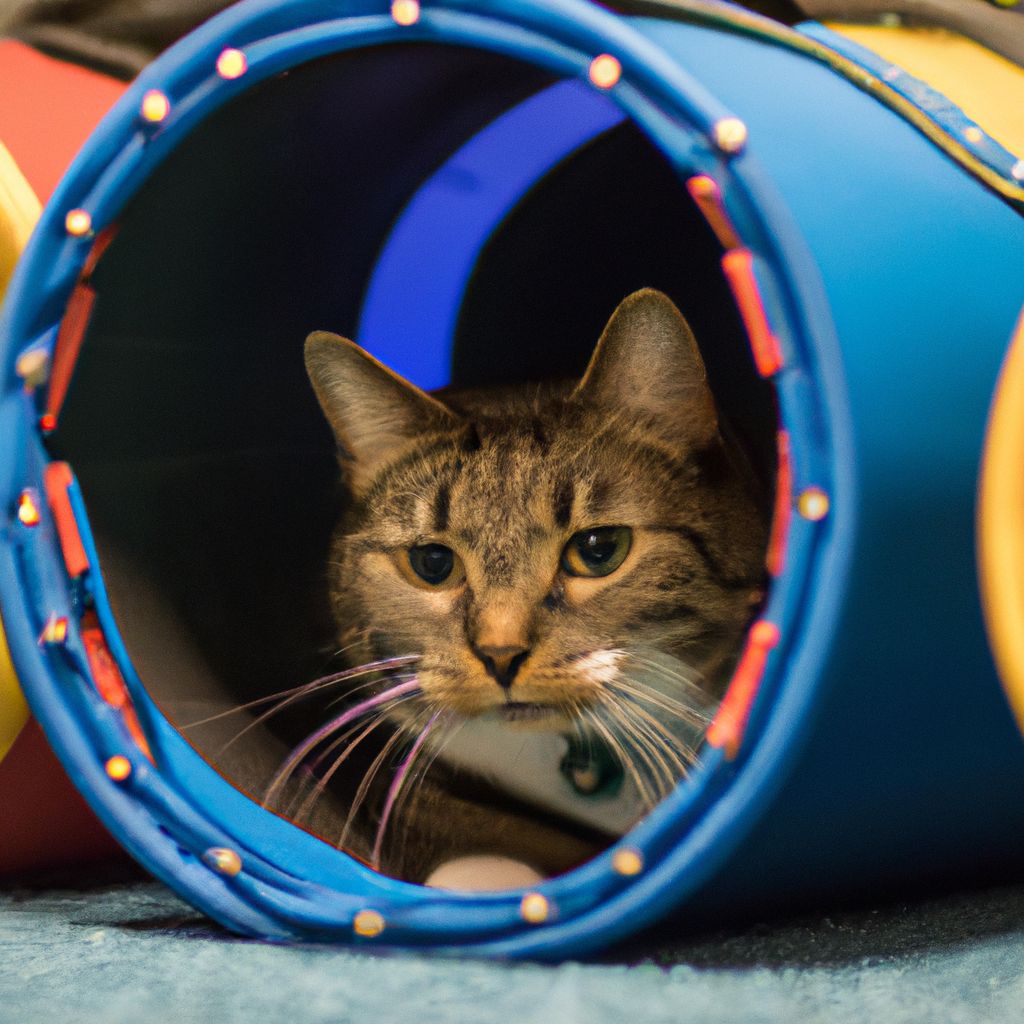.jpg)
Adopting a shelter cat is a great way to add joy and companionship to your life. You can make a big difference in the life of an animal in need. Cats need: proper nutrition, vet care, stimulation, and their own space. Despite their traumatic backgrounds, shelter cats can form strong bonds with their owners.
Suggestions for welcoming your new pet include:
- Creating a safe space
- Gradually introducing them to the house
- Establishing routines
These help cats feel secure and create structure. Plus, adoption is not just about giving a home, but forming a lifelong bond. Your decision to adopt will make a huge difference to your cat’s life and yours!
Benefits of Adopting a Shelter Cat
Adopting a shelter cat brings many advantages – not just for the cat, but for you too! Let’s discover them.
- Shelter cats give joy and friendship. They can be fun, loving and give unconditional love, making your life better.
- Adoption helps with pet overpopulation issues. By taking in a cat in need, you reduce the homeless cat population.
- Shelter cats often come spayed/neutered and vaccinated, saving time and money.
- Studies show that cats have therapeutic effects – reducing stress, lowering blood pressure, and improving mental health.
Plus, here are some interesting facts about adopting shelter cats:
- Many shelters have ‘foster-to-adopt’ programs – giving you time to see if the cat is suitable for you.
- Some shelters do behavior assessments, so you can choose a feline friend based on their personality.
To make the most of adoption:
- Prepare your home – food bowls, litter boxes, scratching posts, and hiding spots.
- Do a gradual introduction – start with one room, expand gradually as the cat gets used to things.
- Be patient – cats have unique needs and personalities – it may take time for them to settle.
- Get regular vet care – vaccinations, exams, dental care, and parasite prevention.
Adopting a shelter cat gives them a forever home – and you a furry companion with many benefits! So don’t wait, visit a shelter and give a cat the home they deserve!
Preparing for a Shelter Cat Adoption
Ready to adopt a shelter cat? Here’s how:
- Do your research. Learn about cat care, behavior, and health.
- Set-up the space. Get food and water bowls, litter box, scratching posts, and bedding.
- Make it safe. Remove potential hazards like toxic plants, small objects, and cords.
Every cat has its own personality. Show patience and love as they adjust.
Pro Tip: Let your new cat explore the house slowly. This will help them feel more comfortable.
Finding Your Perfect Shelter Cat
Are you in search of the purrfect pal? Locating your ideal shelter kitty can be a fulfilling experience. Here are 5 elements to contemplate:
- Age: Decide if a lively kitten or a serene, mature cat is preferred.
- Temperament: Do you prefer an extroverted and sociable feline, or one that is more independent and reclusive?
- Health: Assess the cat’s overall health and ask about any medical issues or special requirements.
- Lifestyle Match: Does the cat’s activity level match yours and can they thrive in your living space?
- Compatibility: If there are other animals in your home, make sure they all get along.
Furthermore, take notice of the individual traits of each cat. Witness their conduct during your visit to the shelter. Look for signs of amicability, fondness, and flexibility. Remember that every cat is unique, so take your time until you find the one that fits into your life effortlessly.
Once, I went to a shelter to find my own kitty chum. As I strolled through the cages, I spied a timid tabby called Luna. It was love at first sight. In spite of her initial shyness, she quickly blossomed into a loving and playful companion. Luna taught me that patience and understanding can create stunning relationships with shelter cats.
Therefore, accept the journey of finding your ideal shelter cat – it could just alter your life in unbelievable ways!
Adoption Procedures and Paperwork
Adopting a shelter cat has a few important steps. First, visit the shelter and meet the cats. Then, fill out the adoption application form. After that, shelter staff will review the application to determine suitability. If approved, complete paperwork such as adoption contracts and fees.
The steps:
| Step | Description |
|---|---|
| 1 | Visit the shelter and meet cats |
| 2 | Fill out an adoption application form |
| 3 | Application review by shelter staff |
| 4 | Approval and completion of paperwork |
It’s important to consider behavioral challenges and medical conditions that may need attention. Shelter staff can provide info on cats’ backgrounds and personalities.
Jane adopted Luna, a shy black-and-white kitten from the shelter. She was overlooked because of her timid nature. Jane saw Luna’s potential and worked patiently to gain trust. Now Luna is a loving companion who brings joy to Jane’s life.
Bringing Your New Cat Home
Congrats on adopting a shelter cat! Here’s a simple step-by-step guide to help your new furry friend settle in their forever home.
- Create a sanctuary: Make a comfy space for your cat. Include a bed, litter box, food and water bowls, and some toys.
- Gradual introduction: Let your cat explore their surroundings. Start with one room, then let them access other parts of the house.
- Provide the basics: Make sure your cat always has access to food and water. Show them where the litter box is and how to use it.
- Socialization: Introduce family members or pets slowly. Give everyone time to get to know each other.
- Positive reinforcement: Reward your cat with treats or praise for good behavior. This will help build trust between you.
- Be patient: Cats can be stressed in new environments. Give them time and space to adjust, with gentle reassurance.
Plus, get your cat a vet check-up soon after bringing them home. They may need vaccinations or treatments.
My own experience adopting a shelter cat, Oliver, was truly inspiring. When he first arrived, he was timid but quickly adapted. One day, as I read on the couch, Oliver snuggled up next to me, purring like he’d found his home. The joy he brought us was incredible. Showing a shelter cat love can be a very rewarding experience.
Remember, bringing a new cat home can be a great adventure. With love, patience, and care, you can help your new feline companion settle in and create a lasting bond.
Adjusting and Settling In
Table:
| Col 1 | Col 2 | Col 3 |
|---|---|---|
| Give | Create | Intro |
| a safe | a calm | the cat |
| space | area for | slowly |
| for cat | the cat to | to other |
| retreat in | pets if | |
| and feel | any exist |
Plus, make sure smells that are familiar to them are around. Let them look around in their own time. Tip: Patience is vital!
Taking Care of Your Shelter Cat
Whiskers, a shelter cat, was saved from an abandoned house. Malnourished and scared, he was given proper care. With this, he became a happy and playful companion.
So, to ensure the well-being of cats, here are three tips:
- Nutrition: Give protein-rich, high-quality cat food.
- Healthcare: Vaccinate, check-up, and treat for fleas, ticks, and worms.
- Environment: Give toys, scratching posts, and comfy spots.
Moreover, each cat has a unique background and character. Take the time to know their needs and desires for a content relationship.
Creating a Happy and Healthy Environment
For your adopted kitty, create a safe haven! Set up a secluded area with cozy vibes. Stimulate their mind with interactive toys and scratching posts. Give them vertical spaces to climb and observe. Maintain hygiene by cleaning the litter box, providing fresh food and water, and grooming. Promote playtime with prey-like toys for exercise. Show love – pet them, talk softly, and offer treats.
Plus, give them hiding spots in your home. Boxes and nooks make them feel secure. Tell them a heartwarming story about Max – a shelter cat who found his forever home. He went from timid to confident and happy with patience, toys, and affection.
Conclusion
Adopting a shelter cat can be a rewarding experience. It helps reduce the homeless cat population and comes with many benefits. These cats are often already spayed or neutered, as well as up-to-date on vaccinations and medical check-ups. Plus, they demonstrate resilience when it comes to overcoming difficult pasts.
Max is a great example of this. He was found abandoned in a park, yet he quickly adapted to his new home. He became an inseparable companion to his family. He shows how shelter cats can bring immense joy into our lives. Adopting a shelter cat is a reminder of the importance of compassion and love.
Frequently Asked Questions
1. What are the benefits of adopting a shelter cat?
Adopting a shelter cat has numerous benefits. Firstly, you are giving a loving and deserving cat a second chance at life. Additionally, shelter cats are often already spayed or neutered, vaccinated, and microchipped, saving you time and money. Finally, by adopting from a shelter, you are helping to reduce the number of stray and homeless cats in your community.
2. How do I choose the right shelter cat for me?
Choosing the right shelter cat requires considering your lifestyle and preferences. Spend time interacting with different cats to see which one best matches your energy level and personality. Consider factors such as the cat’s age, temperament, and any special needs. The shelter staff can also provide valuable insights to help you make an informed decision.
3. Are shelter cats healthy?
Shelter cats undergo thorough medical examinations and receive necessary treatments before being made available for adoption. However, like any other cat, they may develop health issues later in life. Many shelters provide health guarantees, so be sure to ask about their policies. It’s also recommended to schedule a vet appointment shortly after adoption to ensure your new cat is in good health.
4. How do I introduce a shelter cat to my home?
Introducing a shelter cat to your home requires patience and a gradual approach. Start by creating a safe and comfortable space for your new cat with food, litter box, and toys. Allow them to explore at their own pace and gradually introduce them to other areas of your home. It’s important to provide plenty of positive reinforcement, love, and attention during the adjustment period.
5. How can I help a shelter cat adjust to their new environment?
Helping a shelter cat adjust to their new environment involves providing a consistent routine, plenty of mental and physical stimulation, and lots of love and patience. Give them time to adjust and establish trust. Provide hiding spots, vertical spaces, and scratching posts to make them feel secure. Slowly introduce them to family members or other pets under supervision.
6. What ongoing care does a shelter cat require?
Shelter cats require regular feeding, fresh water, litter box maintenance, and grooming. It’s essential to provide them with regular veterinary check-ups, vaccinations, and parasite prevention. Maintaining a stimulating environment and providing opportunities for play and exercise is also crucial for their physical and mental well-being.
Originally posted 2023-07-28 17:13:07.






